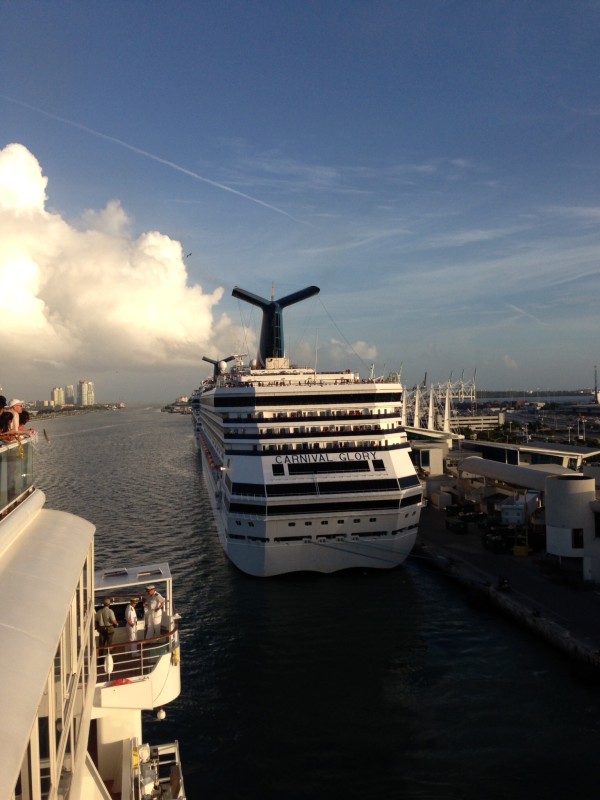From a High School friend who went the Navy path, and keeps in touch: RadGuy in West Texas…
My background in nuclear power. I completed 6 years in the US Navy’s nuclear program. I qualified at the Nautilus (S1W) prototype in Idaho, and was assigned for several years to a nuclear power guided missile cruiser. My last year in the Navy was spent planning and performing repair work on submarine, cruiser and carrier nuclear plants. As a civilian, I spent 5 years doing inspection and testing in the engineering department at one of the largest (1250+ megawatts per unit) nuclear plants in the United States. I ended up with a reasonable amount of knowledge enlightened by a great deal of practical experience.
Why is this on a medical blog dealing the Emergency Medicine? The EM system has evolved in a way that the nuclear power industry has not. In EM, many trained technicians have been added over the years; ranging from EMS first responders in the field, to the various techs in-house in most EDs. Having a group of people trained to perform specific tasks not only speeds care, but it allows those dealing with the most serious problems to act with greater focus.
The nuclear power industry has not evolved in a similar manner. An irrational fear of nuclear energy has left power plant operations to be a great mystery, and made outcasts of those who run the plants. This has left us with a very small number of operators run massive plants. Typical coverage might be 4 or 5 operators in the control room, and a similar number out in the plant. In my civilian career, that would be perhaps a dozen per unit, on a two unit site approaching 10,000 acres. Yes, there are more than a thousand other employees, but only around slightly more than 20 on site that are trained and allowed to operate equipment. The high level of engineering and verbatim compliance with written procedures allows this to work. Highly trained people do certain things in a pre-planned certain order.
In Japan we have seen a large, multi unit plant hammered by a huge earthquake and a tsunami. The earthquake was of a severity far beyond what the plant was designed for. All power was lost, and bad things started to happen that could not be coped with by the onsite staff.
The immediate need was for power, and circulating water. A group of trained responders should be available to provide these things from self contained equipment they bring with them. A modern nuclear plant is built on a truly vast scale. Careful modification will be needed so that these crews may begin to provide the needed services without help from the plant operators. The task is to arrive, hook up the needed services, and let the trained plant operator operate the needed equipment inside the plant.
All the equipment should be of a size to be carried in or behind standard size vehicle, say a large pickup or van. The equipment must be self contained, and be simple to operate. These units should be sized to be contained in a large pickup, or towed in a reasonable sized trailer. When needed, they should be suitable for air transport.
A fair standard would be 300 hp class diesel engines, attached respectively to generators, pumps, and air compressors. These should be of a robust but ordinary commercial design. Fuel tanks sized for around 24 hours of operation.
On the plant side, design must allow vital systems to be accessed from outside, with ordinary hand tools. I propose color coded and number steel access plates on the outer walls of various plant buildings. Crews can unbolt the cover plate, expose connections, and hook up the appropriate service.
In Japan, the first need was a power connection for each unit. Assume that first responders begin to arrive around three hours after the initial event. Whether they arrive by road, air, barge or train does not matter. The first units to arrive connect to the first power panel for the assigned unit. This power is not to run plant equipment, but rather to provide power for instrumentation, control and communications. For each unit, this is well within the capacity of a single portable diesel.
Once there is power for communications, and more direct intervention can begin. As additional power units arrive, they can be attached to single plant loads, those deemed most vital at the time. Examples might be a small number of pumps, or even a single large pump. It could be power for a single set of motor operated valves. The power units would be attached under the direction of the operators for each plant. These could be emergency feed pumps, fire pumps, isolated HVAC systems.
Besides power, there may be a need for cooling water. From photographs, it appears the circulating water intake structure in Japan was badly damaged. If the systems are intact, portable power can run some of the pumps. With damage such as occurred in Japan, connections similar to standard dry standpipe fire systems should be provided for in an individual basis for vital loads. This could be heat exchangers for cooling anything from the plant emergency generators, to decay heat removal systems. Single fire engines, or trailer mounted pumps can then provide water for individual loads.
These small interventions will provide time for other needed repairs, and for more trained plant operators, engineers and technicians to arrive. From the available information from Japan, perhaps a dozen such portable units would have allowed things to progress much more slowly. Indeed, with timely intervention and a bit of luck fission products would not have been released.
It is time to accept nuclear power as a part of daily life. The communities that use the power from these plants can also provide support in emergencies. Truly, we are all in this together.


